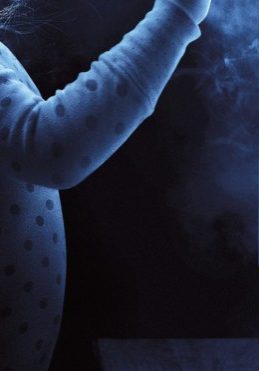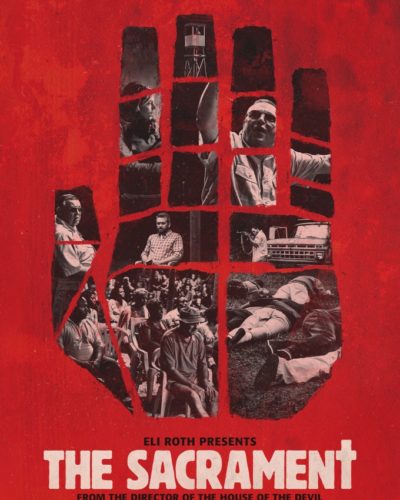Whispers from Beyond: An Exploration of Poltergeist
“There’s no place like home… unless home is haunted.”
Directed by Gil Kenan, the 2015 remake of *Poltergeist* seeks to breathe new life into a classic horror tale. The film invites audiences into the seemingly idyllic lives of the Bowen family, who have just moved into a suburban house that conceals a menacing supernatural presence. As strange phenomena begin to haunt them and their youngest daughter, Madison, is drawn into a sinister realm, the family must confront the terrifying reality that malevolent spirits are vying for their very souls. With a blend of thrilling scares and modernized techniques, Kenan’s *Poltergeist* stands as a homage to Tobe Hooper’s original from 1982, yet struggles to carve out its unique identity.
Crafting Tension: The Atmosphere of Dread
The film anchors its horror atmosphere through a potent combination of suspense and foreboding. Shadows seem to loom larger, and everyday household items take on new, sinister meanings. Early on, small moments of unease are beautifully woven into the mundane, creating a rich tapestry of discomfort that builds toward the film’s more explosive scares. Juxtaposing the vibrancy of family life with haunting phenomena provides a jarring contrast that amplifies the horror.
Kenan utilizes palpable silence before each terrifying moment, establishing a sonic foundation that tightens the viewer’s expectations. The eerie stillness often precedes the revelation of paranormal activities, eliciting a sense of impending doom that keeps the audience on edge. This slow build of tension culminates in explosive moments of horror that shock rather than simply scare, bringing an unsettling energy that lingers long after the credits roll.
Visual Palette: Every Frame a Nightmare
The cinematography of *Poltergeist* is a noteworthy aspect, capturing the essence of horror through careful choices in lighting and color palettes. The film often employs warm, inviting colors in the scenes depicting family life, enhancing the stark contrast when chilling events unfold. The camera angles also play a significant role, with unsettling close-ups and wide shots that encompass the haunting spatial dynamics within the Bowen home, evoking a feeling of claustrophobia amid overwhelming dread.
Special effects strike a balance between practical and digital, offering a blend that enhances the visual language of the horror experience. Moments such as Madison speaking to the disembodied spirit through the television are accompanied by innovative effects that underline the supernatural elements while providing a modern twist to the original’s iconic scenes. This fresh approach can be seen as both a tribute and an evolution, though it occasionally veers into territory that loses the raw, haunting feel of the original.
Soundscapes of Terror: The Role of Audio
Sound design plays an integral role in weaving the film’s disquieting atmosphere. The score complements the visuals meticulously, utilising eerie melodies and unsettling crescendos that echo the family’s mounting dread. There are standout moments where the soundtrack drops completely, leaving an oppressive silence that amplifies the horror, forcing viewers to fill the void with their own anxieties.
Powerful sound effects, including the unsettling rustling of objects and sudden ominous rumbles, serve to engage the audience’s senses further. In a genre where sound is pivotal to the experience, *Poltergeist* carefully orchestrates these elements to heighten tension and deliver fear. It’s these audio choices that sometimes evoke stronger reactions than visuals alone, reminding audiences of the power of fear in the unseen.
Performances Under Pressure: Actors in Terror
The performances in *Poltergeist* exhibit a commendable range, with each character embodying relatable responses to terror. Sam Rockwell as Eric Bowen showcases a nuanced father grappling with disbelief and desperation, conveying deep emotional stakes amidst the horror. Rosemarie DeWitt delivers a compelling performance, embodying the fraught mother caring for her family while spiraling into a realm of dread.
However, while the performances convey emotion, some characters lack depth, making it difficult for the audience to truly connect with their arcs. The film introduces a variety of characters but does not delve deeply into their backgrounds, which could have forged a stronger bond between them and the viewers. As a result, when moments of horror strike, some emotional weight is lost amidst the chaos.
Type and Mechanics: Navigating Horror Paths
*Poltergeist* traverses multiple horror elements, predominantly laying its foundation in supernatural horror while interspersing psychological elements as the family’s stability unravels. By tapping into both the fear of the unknown and the personal vulnerability of its characters, the film resonates within its genre. It draws on the well-worn tropes of hauntings and cursed locations, yet endeavors to breathe fresh life into them through modern narratives and effects.
The mechanics of horror range from psychological tension, which unnerves viewers regarding the safety of their own homes and families, to visceral scares made effective through jump scares and unsettling visuals. While the scares authentically build the narrative’s tension, certain moments seem to rely excessively on jump scares rather than a gradual build-up, possibly detracting from the overall experience for seasoned horror viewers.
Thematic Undertones: Beyond the Paranormal
Beneath its surface, *Poltergeist* explores profound themes of family, loss, and the impact of technology on our lives. It resonates with modern societal commentary about the disconnection often found in family interactions amidst the backdrop of technology. The film raises provocative questions about our relationship with the environment we inhabit and the invisible dangers that lurk within it.
This thematic depth contributes positively to the film’s impact by transforming the horror into a reflective exploration of real-life anxieties. Confronted with chaotic forces, the Bowen family’s struggle emphasizes the significance of unity and perseverance. It reminds audiences that while external forces can be terrifying, the internal family dynamic ultimately holds power against adversity.
A Gripping Experience: Final Thoughts
Overall, *Poltergeist* is an ambitious attempt to revive a classic while navigating the contemporary landscape of horror. While the film boasts commendable visuals, a haunting score, and some thrilling moments, it sometimes falters in character depths and reliance on jump scares. This film may evoke genuine fear and reflection in horror aficionados, but casual viewers might find some elements formulaic.
Those who enjoy supernatural thrillers peppered with family dynamics will find *Poltergeist* engaging, though it may not resonate equally with all audience segments. Comparatively, it stands in the shadows of its predecessor yet offers a fresh interpretation worth experiencing.
As a warning, sensitive viewers may want to prepare for graphic content that arises during intense scenes—particularly as it plays with the themes of family trauma and loss amidst its horror elements. Ultimately, *Poltergeist* can appeal to horror lovers seeking new thrills while reminding others of the haunting realities we face at home.




